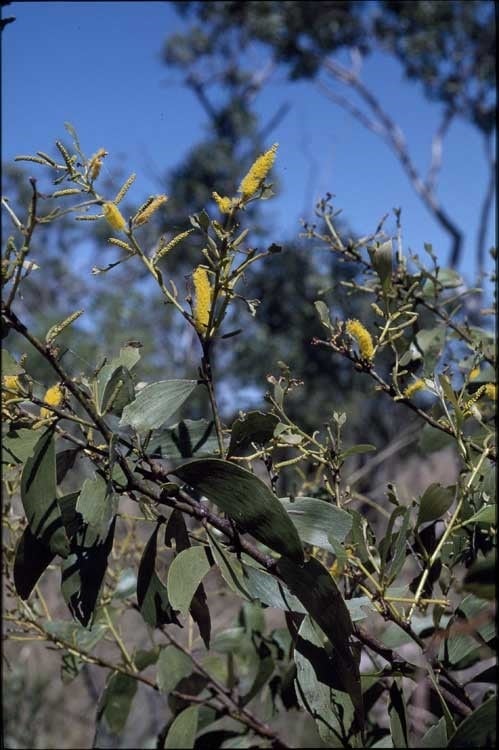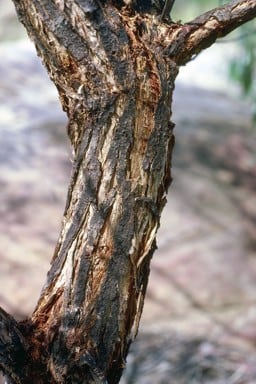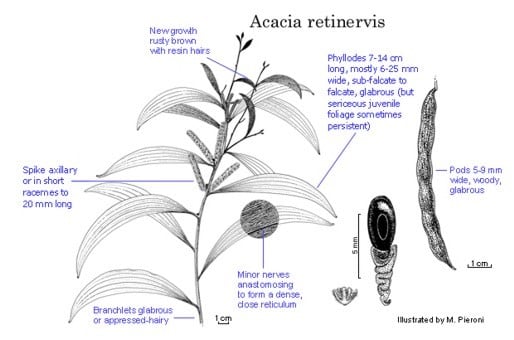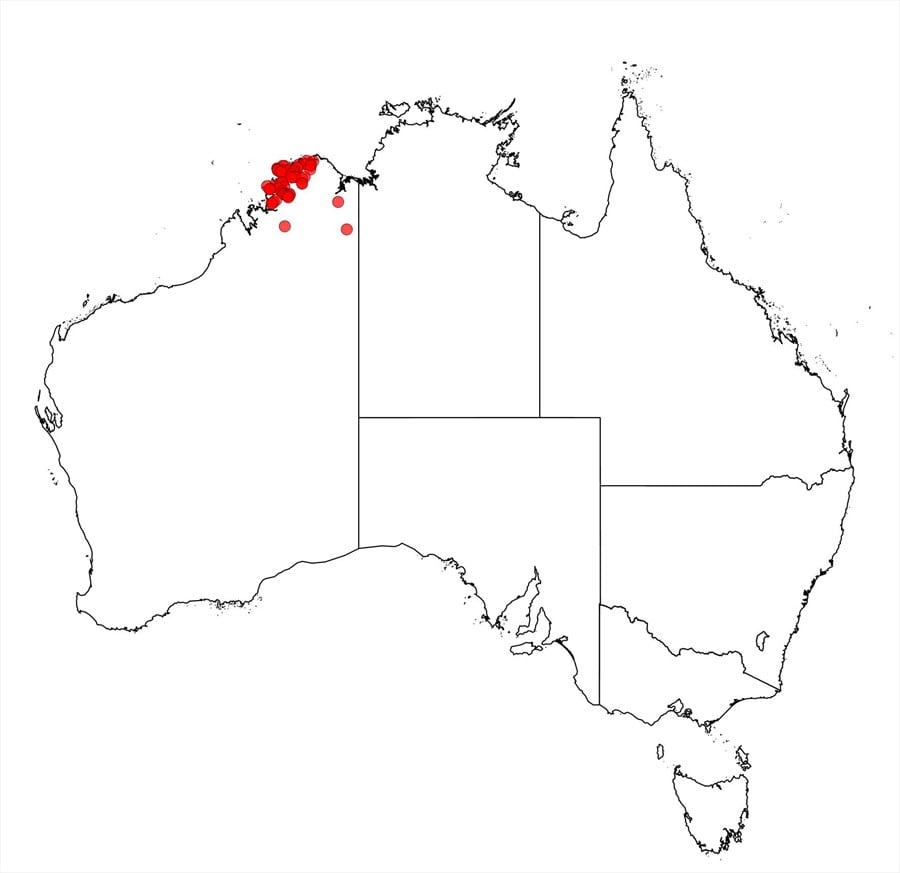Acacia retinervis Benth.
WATTLE
Acacias of Australia

Source: WorldWideWattle ver. 2.
Published at: www.worldwidewattle.com
Photomicrograph of PERTH specimen (B.R. Maslin)
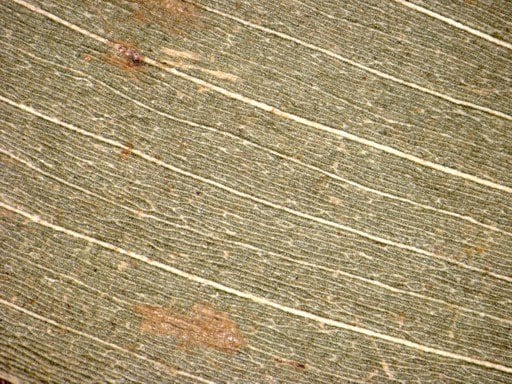
Source: WorldWideWattle ver. 2.
Published at: www.worldwidewattle.com
Photomicrograph of PERTH specimen (B.R. Maslin)
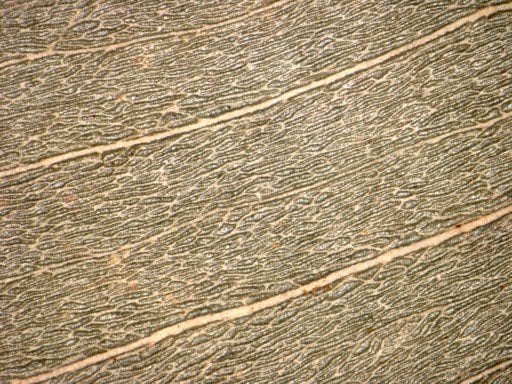
Source: WorldWideWattle ver. 2.
Published at: www.worldwidewattle.com
Photomicrograph of PERTH specimen (B.R. Maslin)
Family
Fabaceae
Distribution
Endemic to the north-western Kimberley region of W.A. where it occurs on numerous off-shore islands, extending inland to the Mitchell Plateau and Prince Regent River region.
Description
Tree to 10 m high or shrub 2–5 m high. Bark fissured, grey-brown. New shoots ferruginous by a dense layer of resin hairlets that sometimes exfoliate in a platy fashion, otherwise glabrous or sometimes sericeous with silver or pale yellow hairs, sometimes both indumentum types on the one plant. Branchlets terete, light brown to reddish, glabrous or sometimes with appressed or spreading hairs. Juvenile phyllodes dimidiate. Adult phyllodes falcate to subfalcate, 7–12 (–14) cm long, (6–) 8–20 (–30) mm wide, glabrous or occasionally sericeous, with 3–5 ±prominent longitudinal nerves; minor obscure or sometimes prominulose, nerves crowded, longitudinally anastomosing (sometimes ±sparingly so) and forming often indistinct, clearly elongated, narrow nerve-islands (rarely forming a net-like reticulum as in A. areolata). Inflorescences simple, rarely few short-racemose, normally 2 per axil; peduncles hairy or scurfy; spikes 1.5–5.5 cm long, yellow. Flowers 5-merous; calyx deeply lobed, villous; ovary pubescent. Pods linear, tapering at each end, ±straight, 3–10.5 cm long, 5–8 mm wide, sub-terete to compressed, woody, glabrous, grey and longitudinally furrowed when dry. Seeds oblique, broadly elliptic, 5–6 mm long, black; areole oblong-elliptic, closed; aril cream.
Phenology
Flowers May–July.
Habitat
Most commonly associated with sandstone rock outcrops.
Specimens
W.A.: Mitchell Plateau, near camp, NW Kimberley, J.S.Beard 8233 (PERTH); Bat Is., Sept. 1820, A.Cunningham 291 (BM, K, NSW); unnamed tributary of the Prince Regent R., N Kimberley, K.F.Kenneally 8904 (NSW, PERTH); Naturalist Is., in Prince Frederick Harbour, W of entrance of Hunter R., K.F.Kenneally 9924 (BRI, PERTH); Crystal Ck, SW of Crystal Head, Admiralty Gulf, M.McDonald 340 (PERTH).
Notes
The distinctive variant of uncertain rank from the northern Kimberley region that was noted by M.W.McDonald & P.G.Kodela, Fl. Australia 11B: 189 (2001) under A. retinervis is now described as A. areolata.
Acacia retinervis is a member of the ‘A. tumida group’ recognized by falcate to subfalcate phyllodes possessing an elongated, close reticulum (areoles indistinct, the nerves often ±touching). The new shoots and expanding phyllodes of A. retinervis normally possessing a dense, ferruginous scurf (same as in A. areolata) but curiously on some specimens the new shoots are densely sericeous with silvery or pale yellow hairs; sometimes both indumentum types on the one plant. This sericeous indumentum is seemingly rare in A. areolata. Acacia retinervis is most closely related to A. areolata and A. tumida, fide M.W.McDonald, Austral. Syst. Bot. 16: 139–164 (2003).
FOA Reference
Data derived from Flora of Australia Volumes 11A (2001), 11B (2001) and 12 (1998), products of ABRS, ©Commonwealth of Australia
Author
P.G.Kodela, M.W.Mcdonald
This identification key and fact sheets are available as a mobile application:
URL: https://apps.lucidcentral.org/wattle/
© Copyright 2018. All rights reserved.
